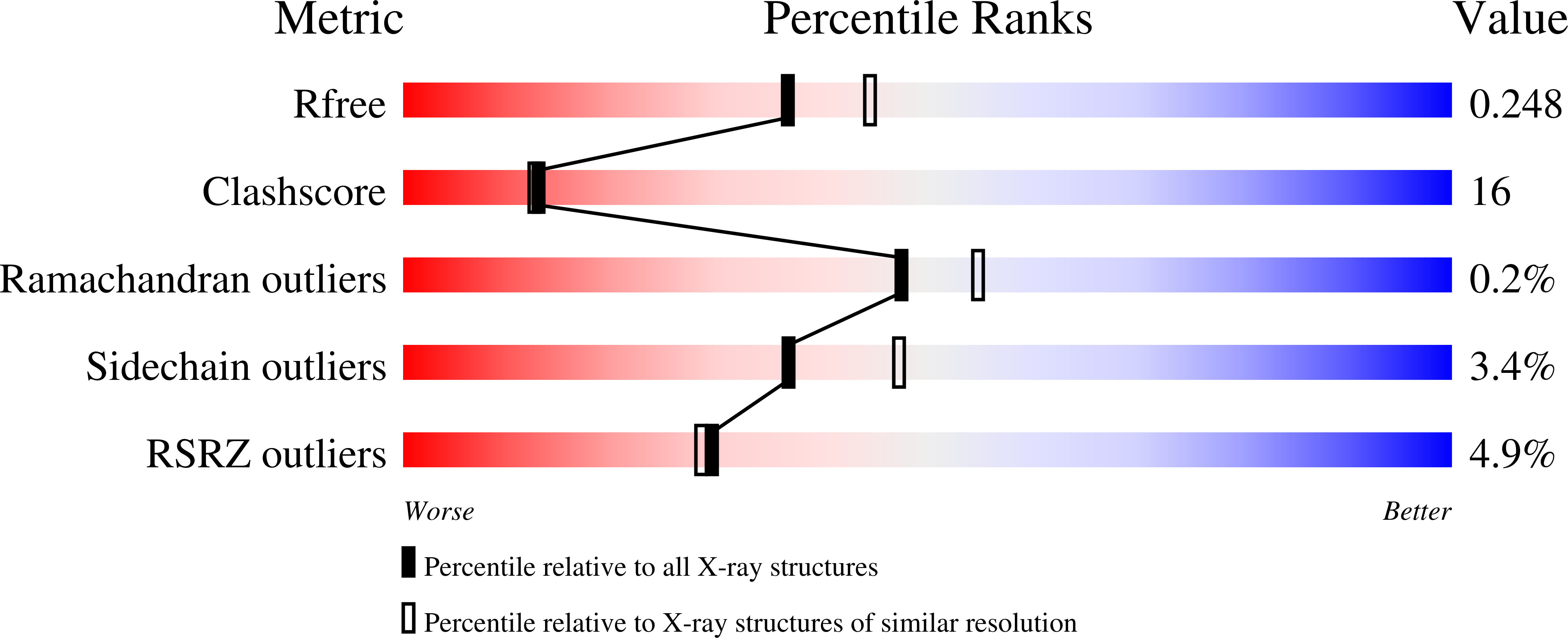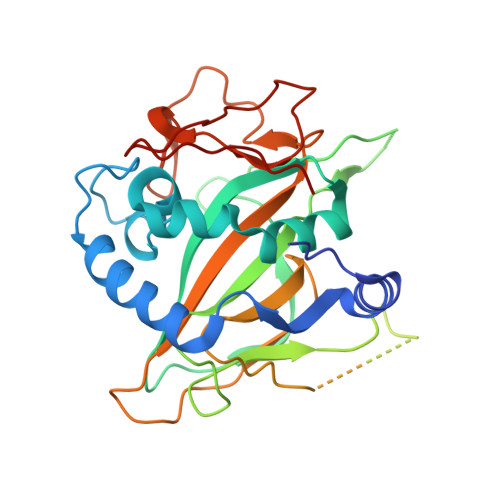Structural analysis of an open active site conformation of nonheme iron halogenase CytC3
Wong, C., Fujimori, D.G., Walsh, C.T., Drennan, C.L.(2009) J Am Chem Soc 131: 4872-4879
- PubMed: 19281171
- DOI: https://doi.org/10.1021/ja8097355
- Primary Citation of Related Structures:
3GJA, 3GJB - PubMed Abstract:
CytC3, a member of the recently discovered class of nonheme Fe(II) and alpha-ketoglutarate (alphaKG)-dependent halogenases, catalyzes the double chlorination of L-2-aminobutyric acid (Aba) to produce a known Streptomyces antibiotic, gamma,gamma-dichloroaminobutyrate. Unlike the majority of the Fe(II)-alphaKG-dependent enzymes that catalyze hydroxylation reactions, halogenases catalyze a transfer of halides. To examine the important enzymatic features that discriminate between chlorination and hydroxylation, the crystal structures of CytC3 both with and without alphaKG/Fe(II) have been solved to 2.2 A resolution. These structures capture CytC3 in an open active site conformation, in which no chloride is bound to iron. Comparison of the open conformation of CytC3 with the closed conformation of another nonheme iron halogenase, SyrB2, suggests two important criteria for creating an enzyme-bound Fe-Cl catalyst: (1) the presence of a hydrogen-bonding network between the chloride and surrounding residues, and (2) the presence of a hydrophobic pocket in which the chloride resides.
Organizational Affiliation:
Department of Chemistry, Massachusetts Institute of Technology, 77 Massachusetts Ave., Cambridge, Massachusetts 02139, USA.


















